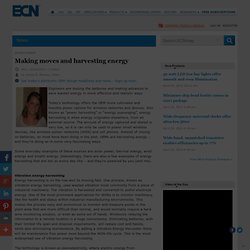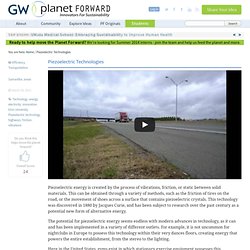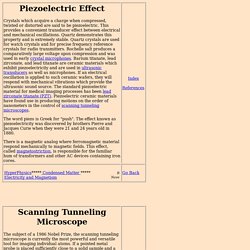

Making moves and harvesting energy. Engineers are tossing the batteries and making advances to save wasted energy in more effective and realistic ways Today’s technology offers the OEM more cultivated and feasible power options for wireless networks and devices.

Also known as “power harvesting” or “energy scavenging”, energy harvesting is when energy originates elsewhere, from an external source. The amount of energy captured and stored is very low, so it is can only be used to power small wireless devices, like wireless sensor networks (WSN) and cell phones. Instead of relying on batteries, as most have been doing in the past, OEMs are harvesting energy – and they’re doing so in some very fascinating ways. Some everyday examples of these sources are solar power, thermal energy, wind energy and kinetic energy. Vibration energy harvestingEnergy harvesting is on the rise and its moving fast. Dancefloor generates electricity at London’s first eco-disco! Sustainability got sexier last week as Coldcut and Jade Jagger hosted the opening of Surya in King’s Cross.

The Club4Climate project is London’s first taste of eco-friendly clubbing, making clubbers happy in the knowledge that their organic beverage-induced booty shaking can generate 60% of the energy needed to run the club. The venue’s most exciting innovation is the piezoelectric dancefloor, which uses quartz crystals and ceramics to turn clubbers’ movement into electricity! Previously seen in the Sustainable Dance Club in Rotterdam, this is Britain’s first exposure to such technology. The rest of the power needed will come from a wind turbine and solar energy system, with any surplus used to power private homes in the area. The club will also be installing the latest air flush, waterless urinals, low flush toilets and automatic taps to ensure maximum water saving plus less greedy air conditioning units. + Club4Climate+ Surya – venue information.
Piezoelectric Technologies. Piezoelectric energy is created by the process of vibrations, friction, or static between solid materials.

This can be obtained through a variety of methods, such as the friction of tires on the road, or the movement of shoes across a surface that contains piezoelectric crystals. This technology was discovered in 1880 by Jacques Curie, and has been subject to research over the past century as a potential new form of alternative energy. The potential for piezoelectric energy seems endless with modern advances in technology, as it can and has been implemented in a variety of different outlets. For example, it is not uncommon for nightclubs in Europe to possess this technology within their very dances floors, creating energy that powers the entire establishment, from the stereo to the lighting. Here in the United States, gyms exist in which stationary exercise equipment possesses this technology in order to power the gym. Systems: History of Piezoelectricity. DISCOVERY AND INSIGHTS 1880 - 1882The first experimental demonstration of a connection between macroscopic piezoelectric phenomena and crystallographic structure was published in 1880 by Pierre and Jacques Curie.
Their experiment consisted of a conclusive measurement of surface charges appearing on specially prepared crystals (tourmaline, quartz, topaz, cane sugar and Rochelle salt among them) which were subjected to mechanical stress. These results were a credit to the Curies' imagination and perseverance, considering that they were obtained with nothing more than tinfoil, glue, wire, magnets and a jeweler's saw. In the scientific circles of the day, this effect was considered quite a "discovery," and was quickly dubbed as "piezoelectricity" in order to distinguish it from other areas of scientific phenomenological experience such as "contact electricity" (friction generated static electricity) and "pyroelectricity" (electricity generated from crystals by heating).
Piezoelectricity. Crystals which acquire a charge when compressed, twisted or distorted are said to be piezoelectric.

This provides a convenient transducer effect between electrical and mechanical oscillations. Quartz demonstrates this property and is extremely stable. Quartz crystals are used for watch crystals and for precise frequency reference crystals for radio transmitters. Rochelle salt produces a comparatively large voltage upon compression and was used in early crystal microphones. Barium titanate, lead zirconate, and lead titanate are ceramic materials which exhibit piezoelectricity and are used in ultrasonic transducers as well as microphones.
The word piezo is Greek for "push". PiezoElectric. Generación de energía mediante efecto piezoeléctrico. Es muy interesante el empleo de las cerámicas piezoeléctricas para la conversión del movimiento de pedestres, vehículos y máquinas en energía verde.

Esta tecnología es una fuente de energía alternativa con alto potencial de aplicación, y está despertando cada vez más el interés de ingenieros, investigadores y estudiantes. Como proveedora de soluciones relacionadas a los materiales pieozeléctricos, la ATCP Ingeniería Física desarrolló la PiezoCélula®, una célula generadora de energía para fines didáctico capaz de convertir vibración, pequeños impactos o el mismo aprieto manual en energía suficiente para encender Leds. La PiezoCélula® está constituída por una cerámica bimorph montada en una placa de circuito electrónico, asociados con los dos LED. Ella es óptima para demostraciones del principio de conversión y del efecto piezoeléctrico. La PiezoCélula® facilita su experimento para la generación de energía. Cómo comprar la PiezoCélula®: El valor de la PiezoCélula® es $ 35,00 USD.